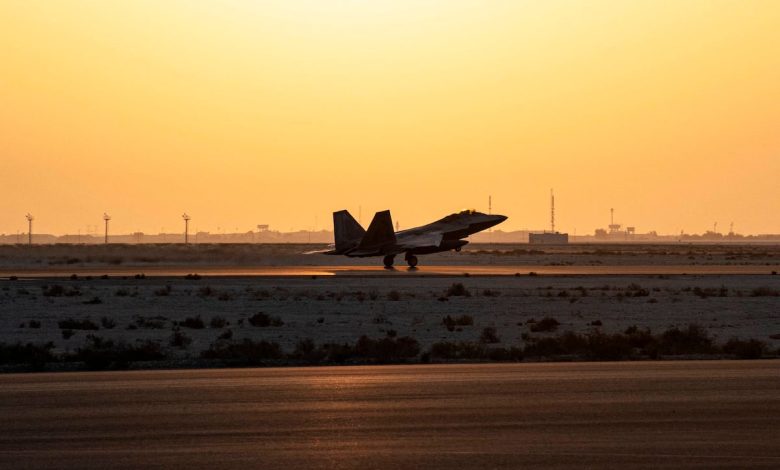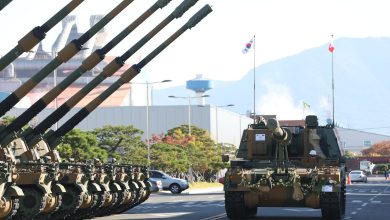To deter Iran, US must rethink military basing in the Middle East

Geography is destiny, but when it comes to U.S. bases in the Middle East, it needn’t be. Our current basing structure detracts from our ability to deter Iran — the core threat — because it reduces our ability to fight effectively in a high-intensity scenario. We need to overcome the tyranny of geography.
In a full-blown war with Iran, these existing bases will be rendered unusable by sustained Iranian attack. The Iranians can see this and have created a large and very capable missile and drone force in part to exploit this situation.
Therefore, we need to reexamine where we are based in the region, both on a day-to-day and contingency basis.
RELATED
Our presence at existing bases provides an important assurance mission to host countries. Thus, we are unlikely to permanently leave bases like Al Dhafra in the United Arab Emirates and Al Udeid in Qatar.
We should, however, work with the Kingdom of Saudi Arabia, Jordan, Oman and Egypt to identify bases as far to the west as possible where we can deploy aircraft, maintenance capabilities, refueling capabilities and weapons.
We have already done some of this work. The “Western Basing Network” was a joint U.S.-Saudi decision to evaluate bases near the Red Sea for use in times of war. Not as far advanced but still under consideration were basing concepts that included Oman, Egypt and Jordan. The U.S. Combined Air Operations Center at Al Udeid has also shifted some of its responsibilities to locations in the United States, significantly reducing air command and control vulnerabilities.
How does this approach, known as “agile combat employment,” work? Based on warnings and indications of war, land-based air assets would relocate to the western bases from their locations along the Arabian Gulf. The number of Iranian weapons that could reach them would be significantly reduced, warning times would be increased and the Iranians would have a targeting problem in ascertaining from which bases U.S. aircraft operated.
In the event of hostilities, these aircraft would launch from the distant bases, be refueled en route and conduct combat operations over Iran. Depending on how the fight was going, they could land and refuel/rearm at the existing forward bases on the Arabian Gulf, minimizing their time on the ground, and increasing their “cycle rate.” Regardless, they would return to the western bases to “bed down.”
However, access to these installations is not guaranteed. The necessary political decisions are not necessarily made quickly in this region. The facilities themselves range from “bare bones” bases to fully equipped ones. Nonetheless, this is something that is squarely in the best interest of all concerned.
There is a second component to this new basing construct, and it is the opportunity made possible by Israel’s 2021 entry into the U.S. Central Command (CENTCOM) Area of Responsibility (AOR). It is now possible to consider basing in Israel in the event of a war with Iran. It has the same geographic advantages as basing in western Saudi Arabia or other Arab states. Additionally, Israel has a powerful, proven air and missile defense capability. The fact that Israel is now in CENTCOM also facilitates training, interoperability, and even maintenance. Israel should certainly be at the forefront of possible basing alternatives.
The third component to the basing solution also involves Israel, and it is the growing normalization of ties with Arab states. This was made diplomatically possible by the signing of the Abraham Accords in 2020. It was made operationally feasible by Israel’s move into the CENTCOM AOR. It was further underwritten by Iranian malign behavior which has finally convinced the Gulf States that a collective approach to air and missile defense is necessary, practicable and achievable without sacrificing sovereignty. It is largely a matter of sharing tactics, techniques, and procedures and agreeing what sensor information to share, and how to share it, with the U.S. acting as the honest broker.
We have a clear-cut example of this concept at work. The Iranians’ large, complex attack against Nevatim Airfield in Israel on April 13, 2024, failed because of Israeli competence, U.S. and allied assistance and the cooperation and assistance of Arab neighbors. Information was shared; airspace was shared. In every measurable way, this was a remarkable success story.
Deterrence must be continuous; in the Middle East, it can have a very short half-life unless it is refreshed systematically. The events of the past two months clearly show that Iran can be deterred from undertaking irresponsible and deadly attacks in the region, but this requires resources, careful messaging and the demonstrated ability to fight and win if necessary.
We now need to move aggressively to develop basing alternatives that demonstrate that we are prepared to fight and prevail in a sustained, high-intensity war with Iran. Geography is destiny for some, but not for all. Being obviously ready to rebase rapidly, and frequently exercising the capability, will increase the chances of peace in the region, because Iran will be watching.
Gen. McKenzie, a retired U.S. Marine general, served as commander of U.S. Central Command from 2019 to 2022. He is the Hertog Distinguished Fellow at the Jewish Institute for National Security of America and author of “The Melting Point: High Command and War in the 21st Century.”







